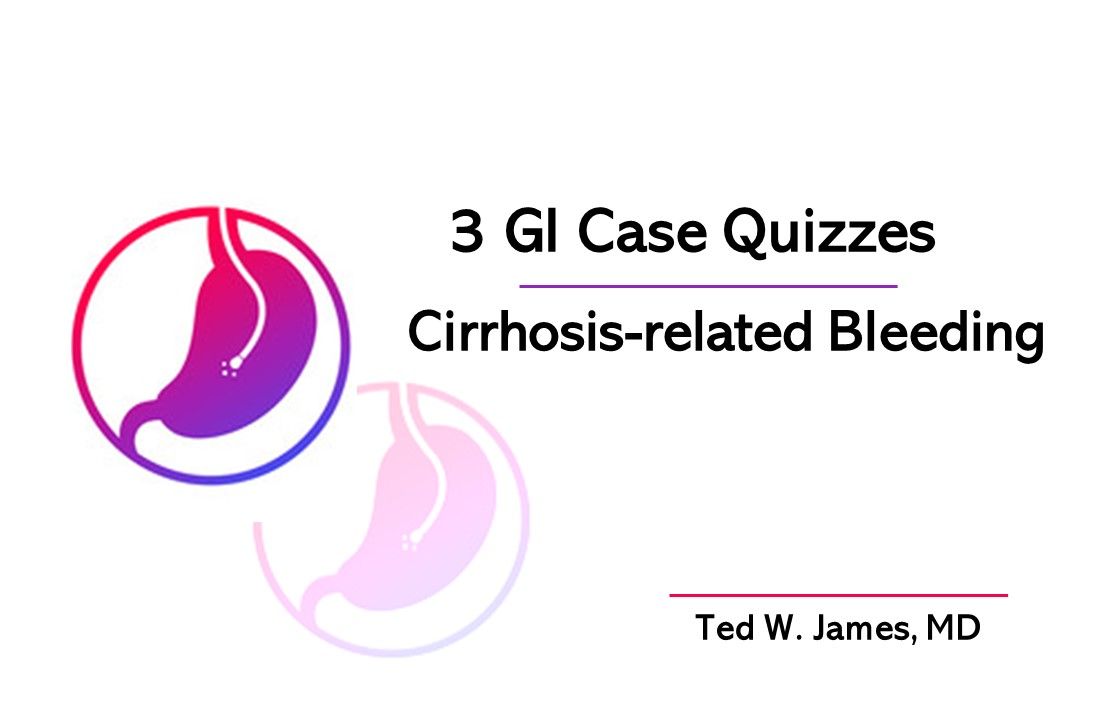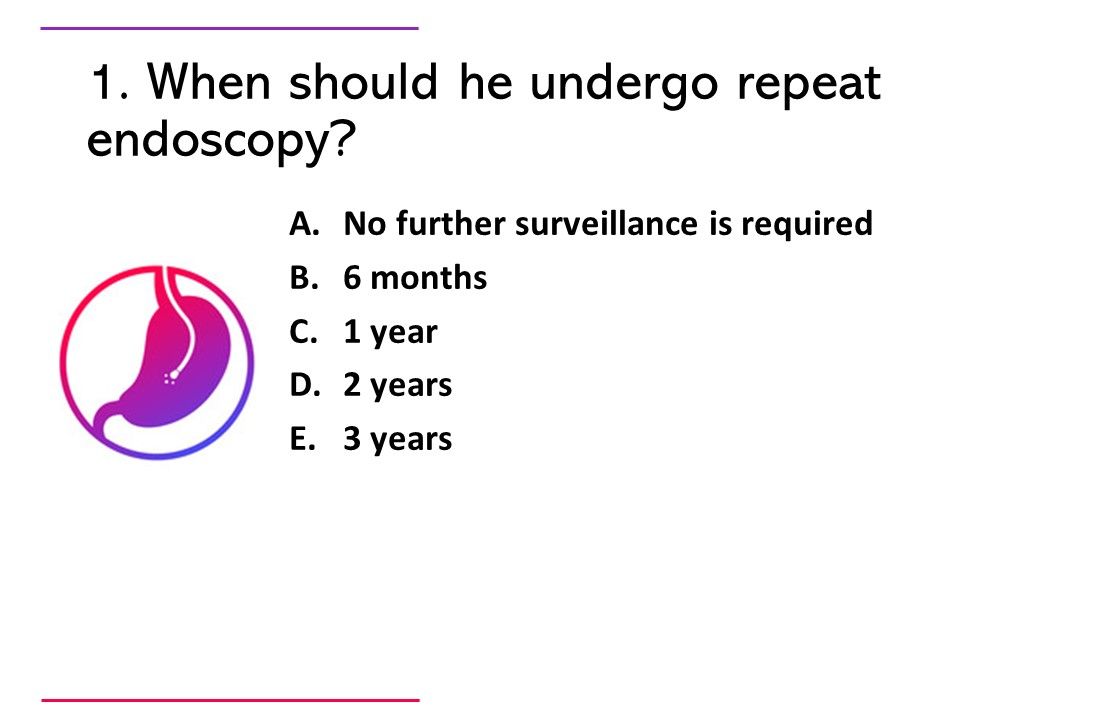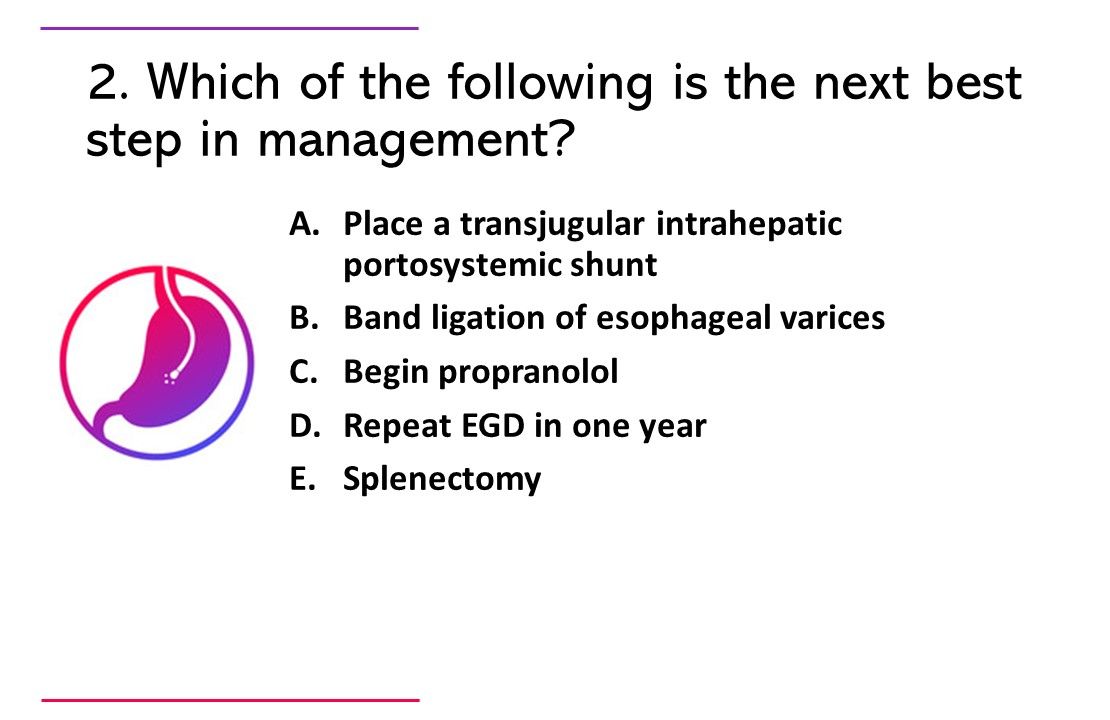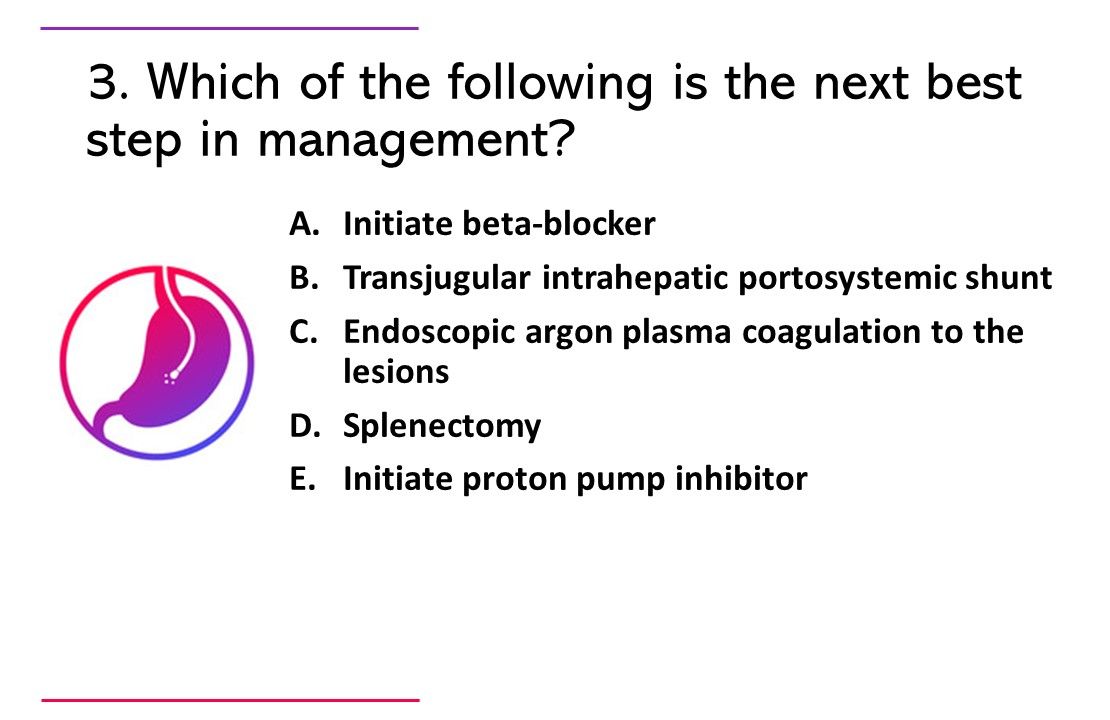© 2025 MJH Life Sciences™ , Patient Care Online – Primary Care News and Clinical Resources. All rights reserved.
3 GI Case Quizzes: Cirrhosis-related Bleeding
These 3 patients with cirrhosis of different etiologies offer you the chance to select the next best step in their management.
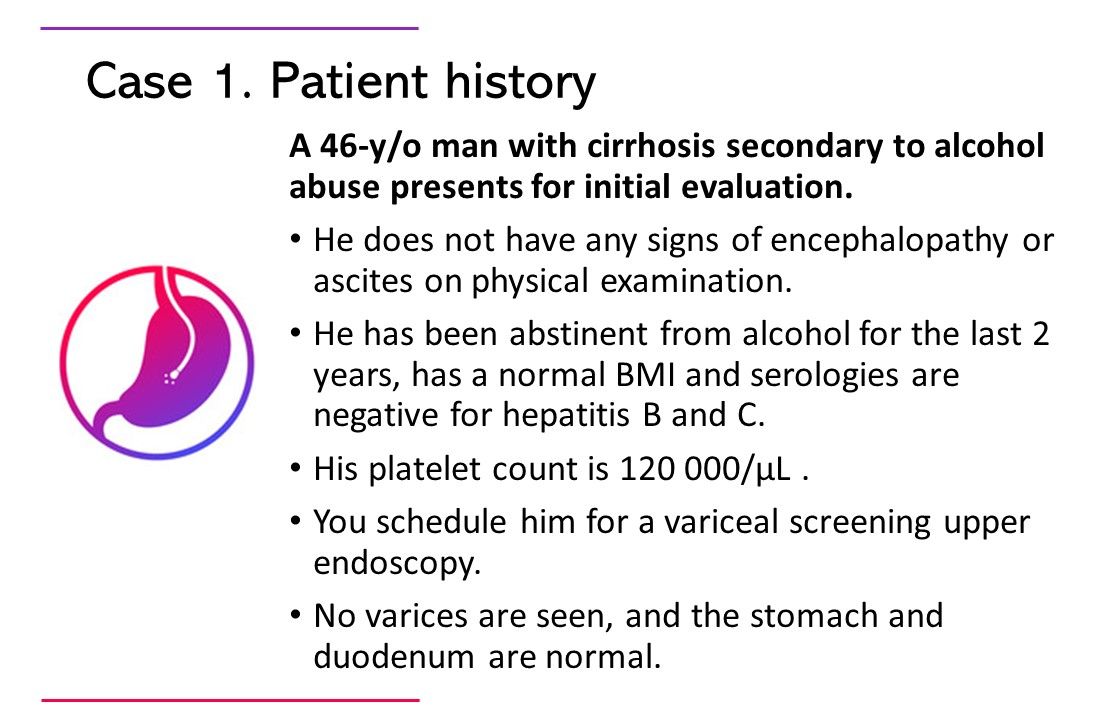
1. Patient history. A 46-y/o man with cirrhosis secondary to alcohol abuse presents for initial evaluation. No encephalopathy or ascites. Abstinent from alcohol for 2 years. BMI normal, no HCB or HCV. Platelets 120 000/µL. Variceal upper endoscopy is negative; stomach and duodenum are normal.
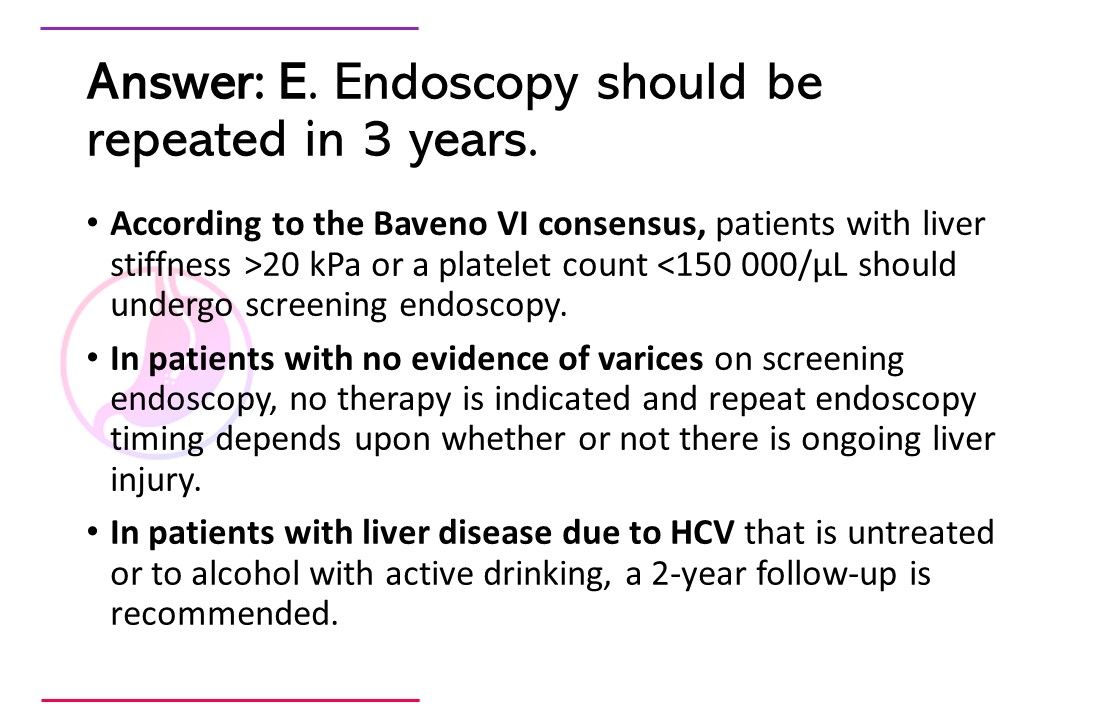
Answer: E. Endoscopy should be repeated in 3 years. Baveno VI consensus: patients with liver stiffness >20 kPa or platelets <150 000/µL should undergo screening endoscopy. In absence of evidence of varices, no therapy is indicated and repeat endoscopy timing depends upon prescence of ongoing liver injury.
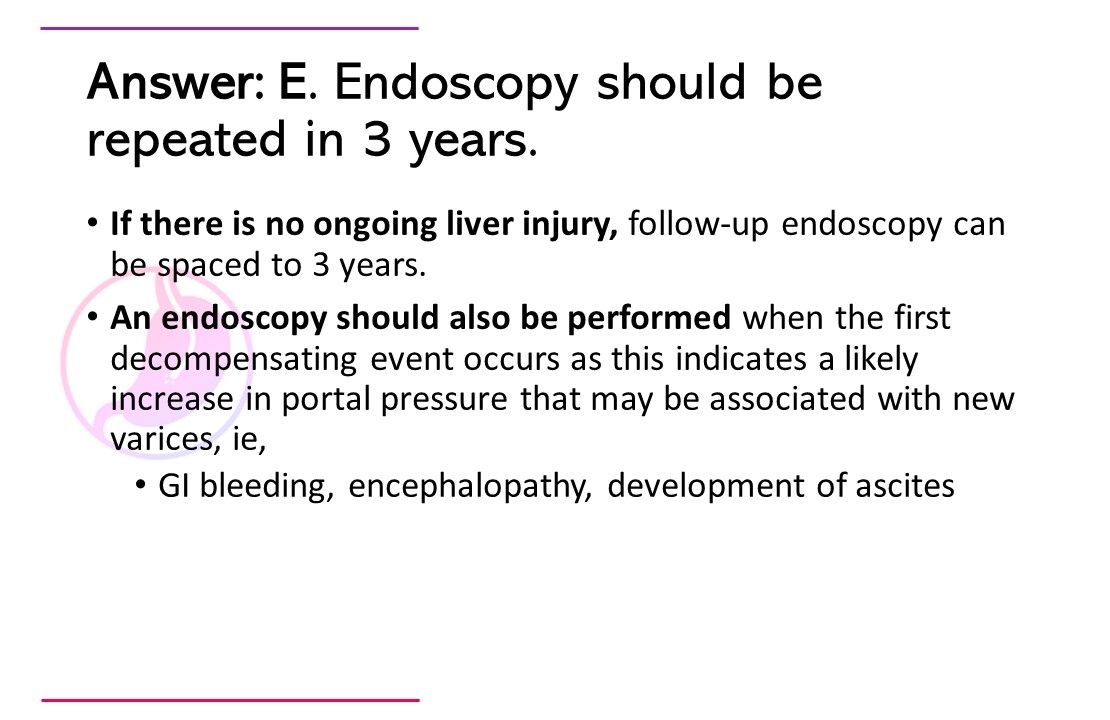
If there is no ongoing liver injury, follow-up endoscopy can be spaced to 3 years. Endoscopy also is indicated when first decompensating event occurs as this indicates a likely increase in portal pressure that may be associated with new varices.
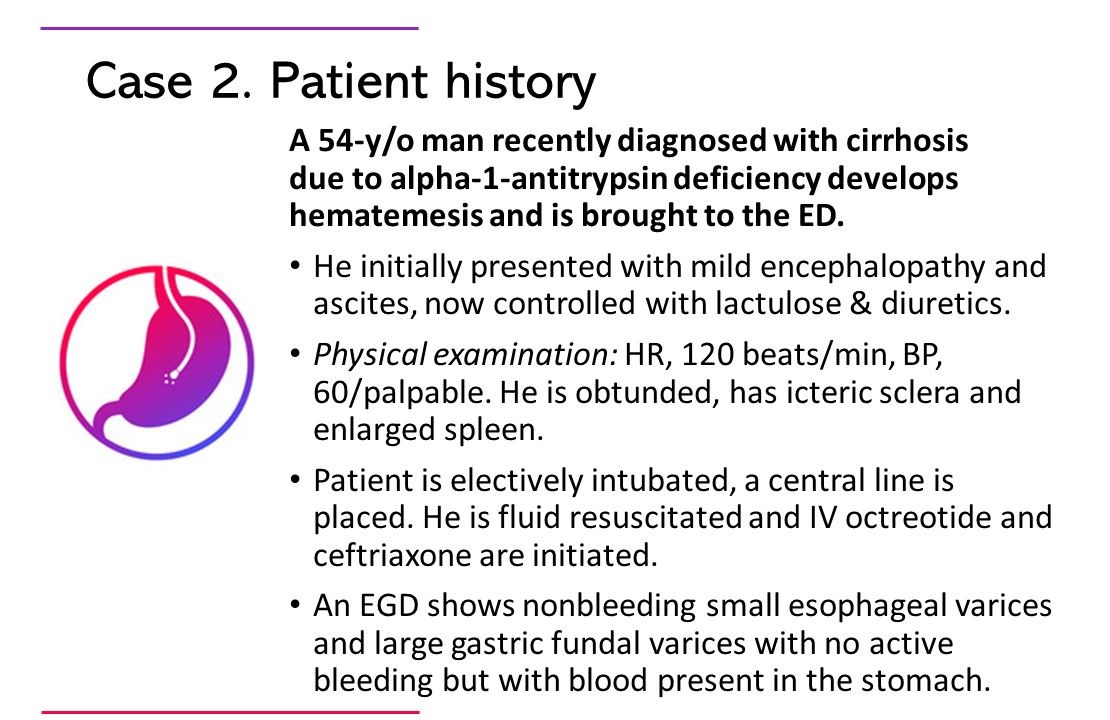
2. Patient history. A 54-y/o man recently diagnosed with cirrhosis due to alpha-1-antitrypsin deficiency develops hematemesis and is brought to the ED. Mild encephalopathy and ascites are now controlled with lactulose & diuretics. Patient is electivley intubated, central line placed for fluid resuscitation and IV octreotide and ceftriaxone. EGD shows nonbleeding small esophageal varices and large gastric fundal varices with no active bleeding but with blood present in the stomach.
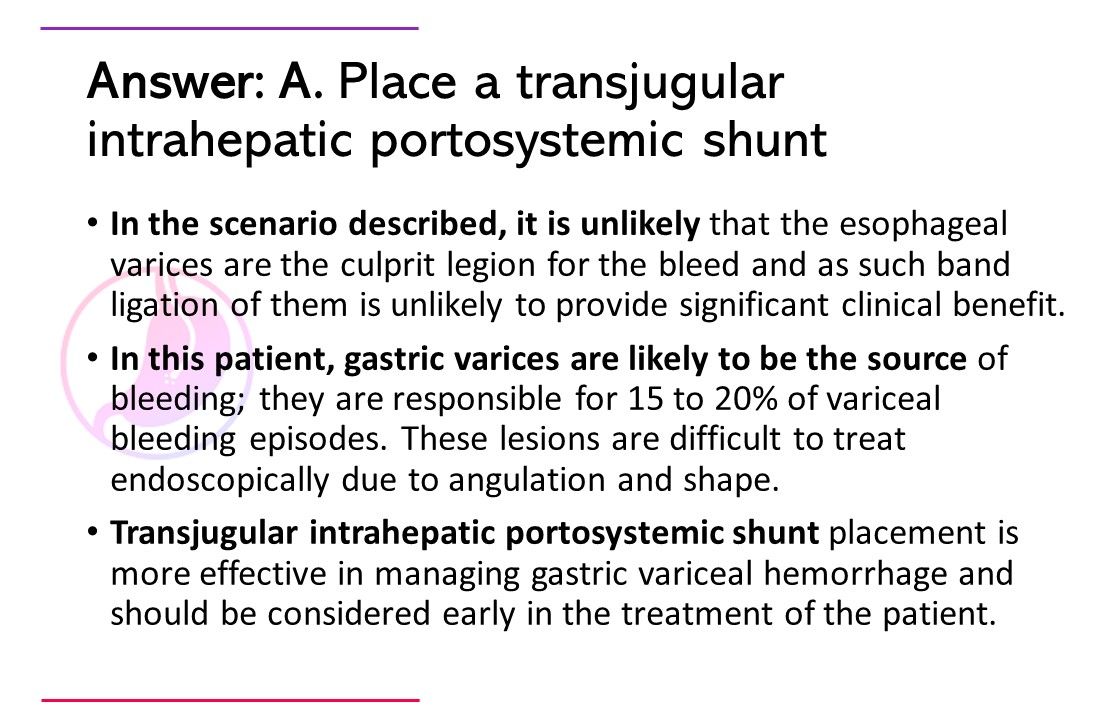
Answer: A. Place a transjugular intrahepatic portosystemic shunt. It is unlikely that esophageal varices are the culprit lesion for the bleed so band ligation is not recommended. Gastric varices are the likely source and are responsible for 15 to 20% of variceal bleeding episodes. Gastric varices are are difficult to treat endoscopically. Transjugular intrahepatic portosystemic shunt placement is more effective and should be considered early in the treatment of the patient.
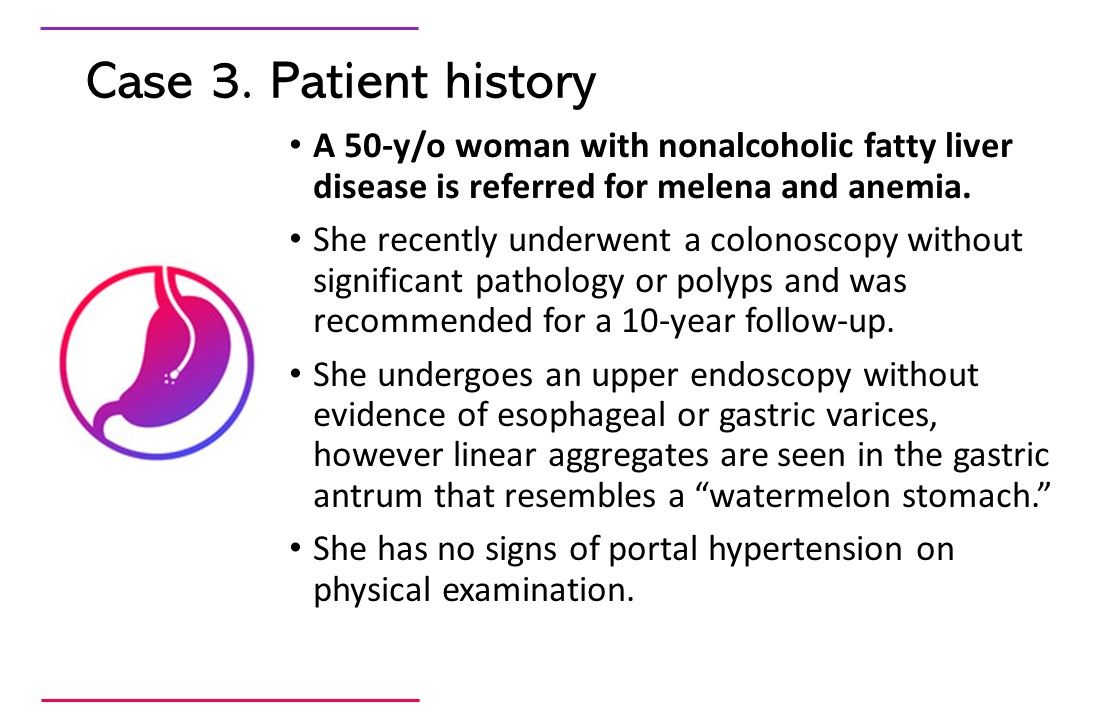
3. Patient history. A 50-y/o woman with nonalcoholic fatty liver disease is referred for melena and anemia. Recent colonoscopy revealed no pathology or polyps; 10-year follow-up was recommended. Upper endoscopy finds no evidence of esophageal or gastric varices; linear aggregates are seen in the gastric antrum that resemble “watermelon stomach.” No signs are found of portal hypertension.

Answer: C. Endoscopic argon plasma coagulation to the lesions. These findings this scenario are consistent with gastric antral vascular ectasia (GAVE), also called “watermelon stomach.” GAVE can occur in the absence of portal hypertension and so does not respond to therapies such as TIPS or beta-blockers. The treatment of choice is endoscopic ablation of the gastric mucosa, either by argon plasma coagulation, radiofrequency ablation, or cryotherapy.
Related Content:

